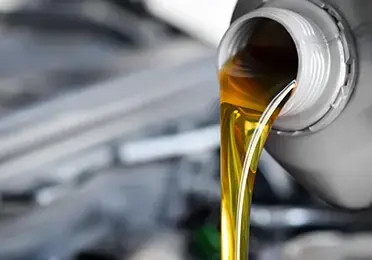Published Date - 9th Jan 2020

To make sure your engine runs smoothly, it is essential to ensure that your engine oil is checked and changed regularly. We’ve listed down the steps required, to help you check and change your engine oil:
How to check your engine oil?
Engine oils clean, cool and protects your engine. They ensure that your engine is properly lubricated and allow the pistons to slide smoothly in the engine cylinders hundreds of times per second. Engine oils also continuously releases impurities contained in the engine circuit. However, it is extremely important to check your engine oil levels regularly, so that you can top it up whenever needed.
Before checking the oil level, make sure you are at a distance from the engine, it is not too hot and is off, so that you don’t burn yourself. Also, keep a check that your car is on level ground, in order to see the exact amount of oil remaining.
Step 1: Pull out the dipstick ring until it is fully removed. Post that, make sure you wipe it with a dry, clean cloth. The location of your dipstick mainly depends on whether you have a vehicle with an in-line engine or a transverse one.
Step 2: Insert the dipstick in the pipe once again. In case, the dipstick tends to get stuck, remove it, wipe it and re-insert it carefully.
Step 3: Pull out the dipstick once again and check the oil level. To do so, you need to look at the “Min(imum)” and “Max(imum)” marks on the dipstick. If the level is below the “Min” mark, you need to refill the oil and vice versa.
Step 4: Open the oil tank cap and keep having a check on the oil levels, as you top it up with the engine oil. Do not go higher than the “Max(imum)" mark.
Step 5: Once you are done, screw the cap on the oil tank and put the dipstick back into the pipe.
It is suggested to check your oil level every 2,000 km, and before taking a long trip to be on a safer side. If the oil level warning light on your dashboard continues to remain ON even after topping up, contact a professional.
How to change your engine oil?
The frequency for changing your engine oil depends on the car’s year of manufacture, its mileage, and what engine type (petrol, direct or indirect injection diesel, diesel particulate filter) it is. Read your vehicle owner’s handbook to know when to change the oil.
It is essential to change the engine oil according to the dates or mileage indicated by the automotive manufacturer or your mechanic. Otherwise, the engine may clog or get damaged sooner, its performance will no longer be optimum, and the vehicle will waste fuel.
To change your motor oil:
- While checking the oil level, make sure that your vehicle is cold and on level ground.
- Open the bonnet and remove the dipstick and the oil filler cap.
- Position your drain pan beneath the oil drain plug located on the engine block.
- Unscrew the oil drain plug and let the oil drain.
- When all the oil has drained, clean the oil drain plug, replace the gasket and screw the plug back on.
This operation is generally messy, so we recommend having rags by your side and wearing old clothing.
Before refilling the oil tank, you must also replace the oil filter. In order to do this:
- Unscrew the old filter and install the new one.
- Remove the pan beneath your vehicle and pour the used oil in a sealed container in order to place it in an oil recovery container at a recycling facility. Do not ever try to pour used engine oil into the sewer system.
- Make sure that the oil drain plug is put on properly, and pour the new oil into the oil tank, using a funnel to avoid spills.
- Be patient for a few minutes to allow the oil to circulate through the engine.
- Check the oil level, and refill if required.
- Screw the oil filler cap back on, start the engine, and let it run for about two minutes, to give the oil time to flow uniformly throughout the engine.
- Let the engine cool, and check that the oil level is good.
If you are finding it tough to change your engine oil by yourself, don’t hesitate to call on a professional to service your vehicle. Most garages provide oil changes!

All about Engine Oil
For a healthier and longer engine life, you need to fuel it with the right engine oil. Engine oils are crucial in the smooth running of engines, reducing fuel emissions and improving engine’s performance.